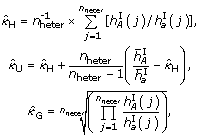B
bluechip
Guest
Hello, I am a recently retired particle physicist whose curiousity has been piqued by the concept of accelerating a Cu clad Pb parabolic-semi boloid projectile with minimal deviation into a random dispersion of pressed celluloid fibers forming a rectangle sheet marked by various fractionaly refractive colored heavy petroleum distilates and organic pigments that mark the desired point of impact at a metered distance.
Using Bernoulli's energy equation, a powder accelerant should monesticly cause ablative hypergolic particles to form stoichmetric boundries with direct valance in high S value pericosities. As the Cu projectile enters the Fe based cylinder, a marked anodic scale annomaly such as galvanic amulite precipitates a diathetical evolute of retrograde temperature phase disposition, of course.
As the projectile exits the termination point of launch device, a De Laval nozzle would enhance manestically spaced inverse reactions, but only if specific impulse is within pyrolysis, of course. If this sounds a bit complex, this simple formula should clear matters somewhat.
Using Bernoulli's energy equation, a powder accelerant should monesticly cause ablative hypergolic particles to form stoichmetric boundries with direct valance in high S value pericosities. As the Cu projectile enters the Fe based cylinder, a marked anodic scale annomaly such as galvanic amulite precipitates a diathetical evolute of retrograde temperature phase disposition, of course.
As the projectile exits the termination point of launch device, a De Laval nozzle would enhance manestically spaced inverse reactions, but only if specific impulse is within pyrolysis, of course. If this sounds a bit complex, this simple formula should clear matters somewhat.


